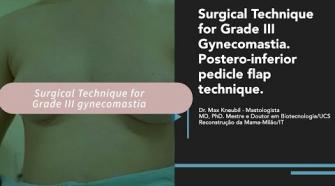This website uses cookies to ensure you get the best experience on our website.
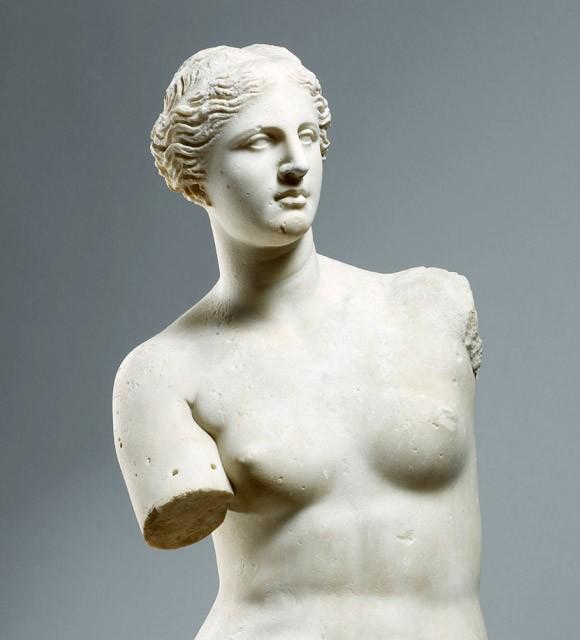
Oncoplastic Breast Surgery
The Oncoplastic Breast Surgery website aims to become a collection of relevant information about oncoplastic and breast reconstructive surgeries.
A channel to share information with mastologists, plastic surgeons, gynecologists and resident physicians, designed to spread knowledge and, above all, contribute to high-quality care for women with breast cancer.
In addition to articles and studies in the area, videos of surgeries will be available with authorized viewing only for medical professionals, upon prior registration and approval. The purpose of this restriction is to avoid the exposure of patients who voluntarily authorize the publication of their procedures, as well as to respect the recommendations of the Federal Council of Medicine.
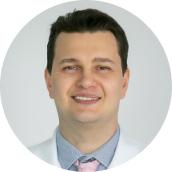
Dr. Maximiliano C. Kneubill
Mastology and Breast Reconstruction
CRM 36430 RS - RQE 24393 - RQE 24394
How it works
The Oncoplastic Breast Sugery was created with the aim of disseminating knowledge and promoting high quality care to women with breast cancer, as well as improving skills in oncoplastic and reconstructive breast surgery.
Scientific articles, relevant news and surgery videos will be published on this channel, as a way to contribute to the scientific evolution of the area and to all interested health professionals.
Learn more about the project in Dr. Max.
Videos gallery
In accordance with the recommendations of medical societies in Brazil, to avoid unnecessary exposure of patients, who voluntarily agreed to have their surgeries recorded for educational purposes, surgical videos and technical presentations are restricted to medical professionals, after registering on the site.
Oncoplastic Mammaplasty
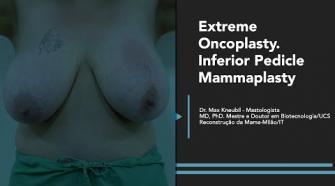
Extreme Oncoplasty. Inferior Pedicle Mammaplasty
Extreme oncoplasty is a breast conserving operation, using oncoplastic techniques, in a patient who, in most physicians' opinions, requires a mastectomy. At present, breast surgeons are attempting to extend the scope of breast conservation so as to include scenarios which are otherwise contraindicated for breast conserving surgery particularly in multicentric/multifocal tumors and locally advanced cancer with limited or partial imaging response to neoadjuvant chemotherapy. Breast cancer patients with large T2 and T3 tumors who underwent breast conservation surgery were shown to have acceptable cosmesis without compromising locoregional control or survival. In addition, these procedures might provide a better quality of life than mastectomy, reconstruction and radiation therapy.
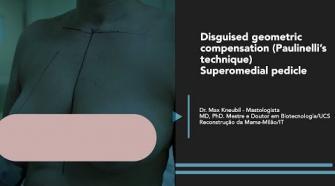
Disguised Geometric Compensation Mammoplasty (Paulinelli’s technique)
Disguised Geometric Compensation Mammoplasty is suitable for tumours involving the glandular tissue in the pillars of the mammoplasty. In this technique, The resection of the tumour in the pillar, preserving the overlying skin, is geometrically compensated with a corresponding area coming from the lower poles, which folded over itself and maintained the skin vascularity in the pillar. This technique also allows breast conservation in situations requiring large resection, with a high rate of free margins, correction of ptosis, satisfactory symmetry, and few complications.
Breast Reconstruction
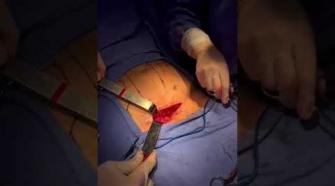
TRAM flap autonomization
Autonomization is a physiological process allowing a flap to develop neo-vascularization from the reconstructed wound bed. In this advanced technique, the flap's original blood supply is intentionally reduced or tied off. This forces the blood vessels within the flap to grow and develop new connections (anastomose) with the vessels in the new location on the chest.By promoting new blood vessel growth, the flap becomes "autonomous," meaning it can survive on its own. This can lead to a more reliable blood supply and help reduce complications like flap necrosis, especially in high-risk patients.
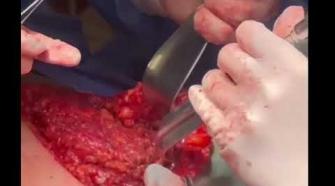
Combination of Anterior Intercostal Artery Perforator (AICAP) Flap and Modified Lateral Intercostal Artery Perforator (LICAP) Flap for Breast Reconstruction
Oncoplastic surgery through dermo-adipose flaps based in perforating arteries (muscle sparing flaps) for partial reconstruction is increasingly used as a good option for avoiding musculocutaneous flaps. This new reconstructive technique, which combines and utilizes both the AICAP and LICAP flaps as auto prosthesis, is considered a valid option. This combined procedure allows to achieve a satisfying result and proves to be an excellent alternative to breast implants in the reconstructive surgery setting.
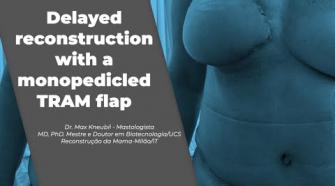
Immediate Breast Reconstruction with Lipofilled Mini Dorsi Flap
The lipofilled mini dorsi flap technique is an interesting solution for immediate breast reconstruction. This technique is an efficient, quick, elegant and less invasive solution that is easier to perform, with excelente long-term results for immediate breast reconstruction procedures after mastectomy in a single operation. Lipofilling improves the flap volume associated with a natural breast appearance, therefore, reducing the latissimus dorsi dissection to a small anterior muscle portion. Postoperative follow-up is simpler and better tolerated than after the traditional extended latissimus dorsi flap technique. It is also a good strategy for elderly patients or even younger patients who do not want contralateral breast surgery or breast reconstruction with implants or tissue expanders.
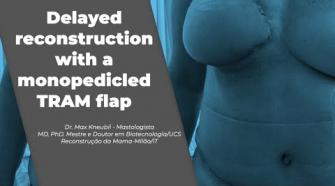
Delayed reconstruction with a monopedicled TRAM flap
Pedicled TRAM flap breast reconstruction remains an effective means of recreating a soft, ptotic, breast after mastectomy for cancer. Advances in technique and preoperative markings have led to increased efficiency and safety. TRAM flap reconstruction involves the transfer of lower abdominal skin and subcutaneous fat based on the superior epigastric vessels. Common risk factors for complications from pedicled TRAM flap reconstruction include smoking and obesity. Initially described by Dr. Hartrampf in 1982, the TRAM flap uses the excess skin and subcutaneous fat that is routinely discarded in a cosmetic abdominoplasty for breast reconstruction. Hartrampf observed that the lower abdomen could survive as an island of tissue as long as the attachments to the rectus sheath and underlying rectus muscle were kept intact. Because of the dual blood supply of the rectus abdominus muscle, the TRAM flap can be raised either as a pedicled flap based on the superior epigastric vessels.
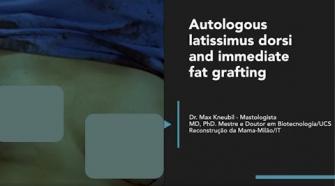
Autologous latissimus dorsi and immediate fat grafting
The technique of using a latissimus dorsi muscle flap reconstruction was described and used for the first time by the Italian surgeon Iginio Tansini, in 1897, as a new concept in covering chest wall defects resulting from breast amputations performed at the end of the 19th century. This surgical technique is very versatile and is widely used in immediate breast reconstruction through the partial or total use of the latissimus dorsi muscle, and can be used in combination with other techniques such as silicone implants and fat grafting. It is also one of the most used flaps in late reconstructions after mastectomy, especially in patients undergoing radiotherapy.
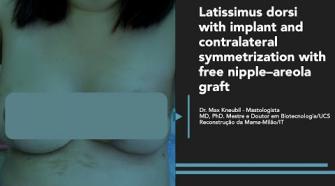
Latissimus dorsi with implant and contralateral symmetrization with free nipple–areola graft
The technique of using a latissimus dorsi muscle flap reconstruction was described and used for the first time by the Italian surgeon Iginio Tansini, in 1897, as a new concept in covering chest wall defects resulting from breast amputations performed at the end of the 19th century.
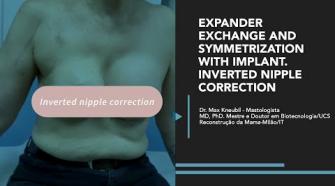
Expander Exchange and symmetrization with implant. Inverted nipple correction
Breast reconstruction following mastectomy can be reliably undertaken using different techniques. Although, excellent cosmetic results can be achieved without contralateral balancing surgery, most breast reconstructions require a contralateral breast symmetrization in order to achieve breast symmetry.
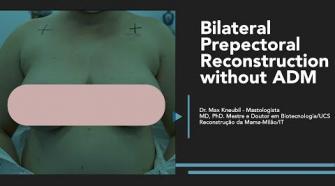
Bilateral Prepectoral Reconstruction without ADM
Pre-pectoral breast reconstruction requires a rigorous patient selection process, considering comorbidities, smoking, previous radiotherapy, subcutaneous thickness, skin fact and skin flaccidity, in addition to oncological criteria, tumor location and size.
Oncoplastic local flaps
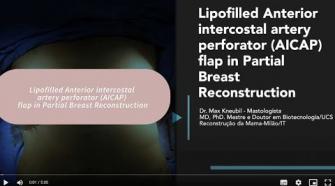
Lipofilled Anterior intercostal artery perforator (AICAP) flap in Partial Breast Reconstruction
AICAP flaps have been described for the correction of small defects and are especially useful in the breast’s lower pole reconstructions for which other displacement or volume replacement techniques are challenging. AICAP flaps have been shown to produce excellent esthetic results in partial breast reconstruction.The AICAP flap associated with fat grafting technique corrects larger defects due to the recruitment of larger tissue volumes. With the association of fat grafting, which is considered an innovative and revolutionary technique for filling defects or correcting post-surgical breast asymmetries, the lipofilled AICAP flap, in addition to correcting a defect with volume correction, also adds improvement in trophism and skin elasticity, an important aspect in breasts submitted to radiotherapy, since this type of treatment can produce varying degrees of sequelae such as depressions and fibrosis in the area where the tumor was resected, interfering with the natural contour of the breast.
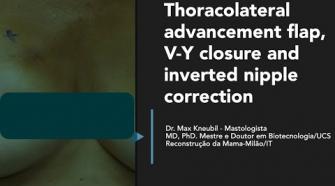
Thoracolateral advancemente flap, V-Y closure and inverted nipple correction
Extreme oncoplasty is a breast conserving operation, using oncoplastic techniques, in a patient who, in most physicians' opinions, requires a mastectomy. The use of thoracolateral flap allows extensive resections in breast-conserving surgery, resulting in good local oncological control, satisfactory symmetry, without the need for symmetrization of the contralateral breast, with low rates of postoperative complications and high rates of free surgical margins.
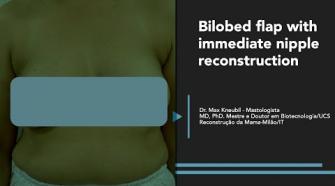
Bilobed flap with immediate nipple reconstruction
The bilobed flap represents a good option for reconstruction of defects originated from the resection of malignant breast tumors located in the upper quadrants and retroareolar region. During breast conservation surgery for cancer, it is possible to incorporate plastic principles to improve aesthetic outcomes. This technique allows wide resections and ample axillary access, respecting oncological principles. In addition, this procedure has low morbidity and does not require the opposite breast symmetrization.The bilobed flap is a double transposition flap, whose vascularization comes from the intercostal perforator vessels.The measurements of the defect are transferred to the upper-outer quadrant and to the thoracolateral fat tissue and each lobe rotates 90 degrees.
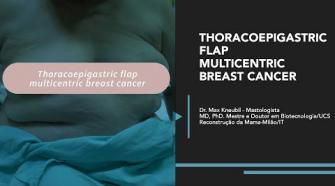
Thoracoepigastric flap. Multicentric breast cancer
The thoracoepigastric flap is a dermoglandular rotation technique, whose vascular support is provided by the perforating branches of the superior epigastric artery. This method allows the closure of large thoracic defects in cases of advanced breast tumors and also represents an excellent tool for partial reconstruction breast in cases of breast-conserving surgery.
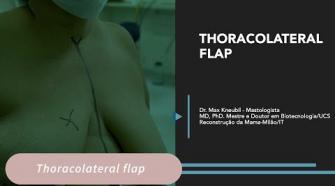
Thoracolateral flap
The thoracolateral flap represents a simple and reliable technique, especially when the breast cancer is located in the lateral portion of the breast and was originally described by Holmström and Lossing in 1985, being a modification of the thoracoepigastric flap developed by Cronin in the end of the 70’s.
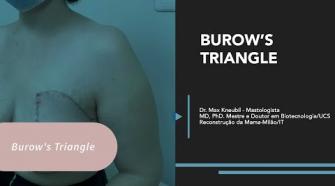
Burow's Triangle
The application of Burow’s triangle advancement has become a fast and straightforward technique. It represents a dermoglandular flap technique and allows resecting the whole thickness of the affected breast quadrant, including its skin, and partial breast reconstruction with a volume displacement approach involving lateral dermoglandular rotation and advancement. This technique is suitable for breast tumors located at the superior edge of the upper quadrant or at the upper inner quadrant. Tumors in these quadrants represent a challenge for conservative surgery due to insufficient breast thickness and risk of skin involvement. Burow’s triangle advancement can reduce mastectomy rates in locally advanced tumors, offering patients better results without jeopardizing oncological safety.
Aesthetic breast surgery
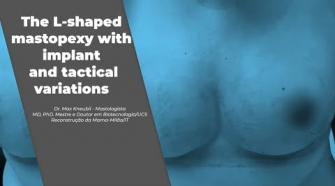
The L shaped mastopexy with implant and tactical variations
Augmentation mastopexy elevates the breast tissue and the nipple areola complex and removes excess skin associated with silicone implants, seeking to correct asymmetries and preserving the sensitivity and physiology of the breasts. Women suffering from severe breast ptosis require further removal due to excess skin and consequente extensive scarring in the shape of an inverted T.
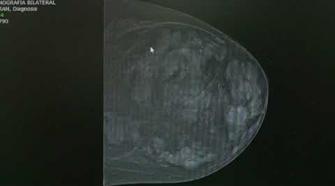
Mammoplasty techniques: Superomedial pedicle, Liacyr Ribeiro type I pedicle and Torek’s technique( free grating of nipple-areola complex)
Breasts have been recognized over time and in different cultures as a symbol of femininity, self-esteem and sensuality. The importance of the breasts for the physical and emotional women’s integrity has led to marked changes in size and shape being considered breast pathologies. Therefore, when the degree of asymmetry is accentuated, leading to disharmony, its correction becomes necessary, considering that postural alterations may occur, interfering with the balance of the osteoarticular system, as well as social and emotional problems. In some cases, surgical treatment can be complex, involving the application of different mammoplasty techniques for the same patient.
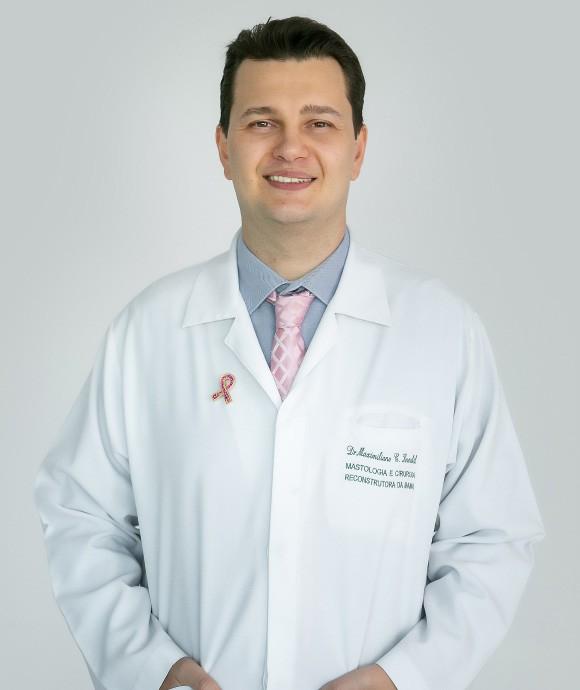
Dr. Maximiliano C. Kneubill
Dr. Max is a mastologist specialized in oncoplastic and reconstructive surgery and a member of the Brazilian Society of Mastology. Along with his clinical background for more than 10 years, he also dedicate himyself to make research. He is an author and co-author of several international publications and scientific articles which serve as a basis for further research.
- Graduation in Medicine from the Federal University of São Paulo (2004).
- Medical residency in Gynecology and Obstetrics at the Federal University of São Paulo (UNIFESP) from 2005 to 2008.
- Medical residency in Mastology at the Federal University of São Paulo (UNIFESP) from 2008 to 2010.
- Fellowship in Breast Reconstructive Surgery at the European Institute of Oncology (IEO) in Milan/Italy from 2010 to 2012.
- Master Degree in Biotechnology by the Institute of Biotechnology University of Caxias do Sul. (2016)
- PhD in Evaluation of Repair Genes in Breast Cancer from the University of Caxias do Sul. (2021)
- Preceptor of the Medical Residency in Mastology at the General Hospital of Caxias do Sul.
- Member of the Brazilian Society of Mastology.
- Extensive experience in the area of Mastology, with emphasis on Breast Reconstructive Surgery, working mainly in the Treatment and Research of Breast Cancer.
- Clinical care in Caxias do Sul, Bento Gonçalves and Veranópolis, all of them in the State of Rio Grande do Sul.
CRM 36430 RS - RQE 24393 - RQE 24394
Articles
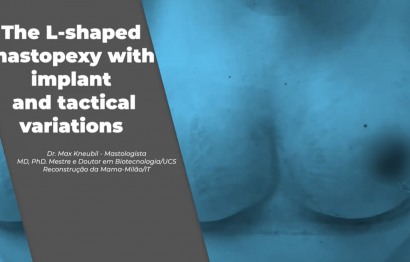
The L-shaped mastopexy with implant and tactical variations
Augmentation mastopexy elevates the breast tissue and the nipple areola complex and removes excess skin associated with silicone implants, seeking to ...
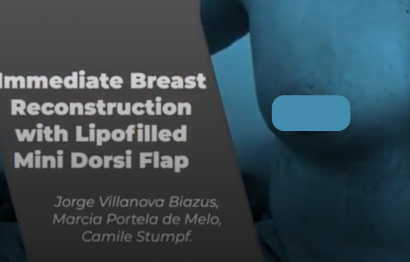
Immediate Breast Reconstruction with Lipofilled Mini Dorsi Flap
The lipofilled mini dorsi flap technique is an interesting solution for immediate breast reconstruction. This technique is an efficient, quick, elegan...

Delayed reconstruction with a monopedicled TRAM flap
Pedicled TRAM flap breast reconstruction remains an effective means of recreating a soft, ptotic, breast after mastectomy for cancer. Advances in tech...


